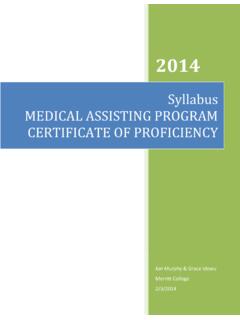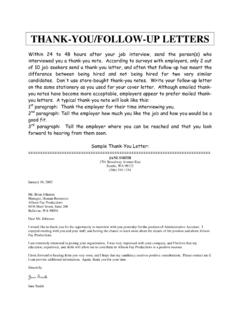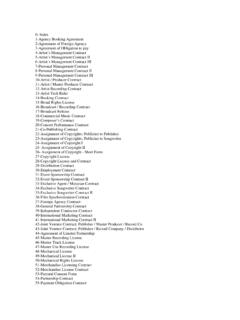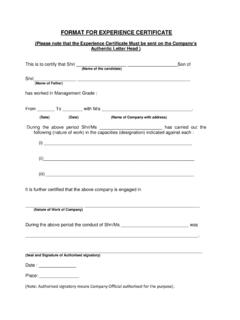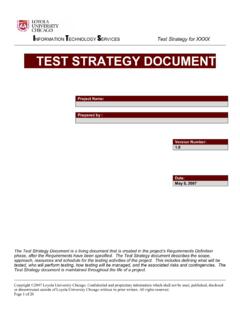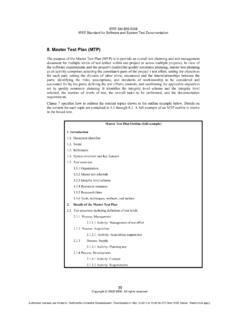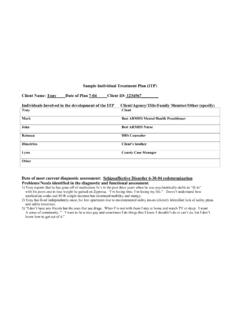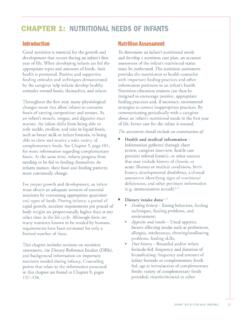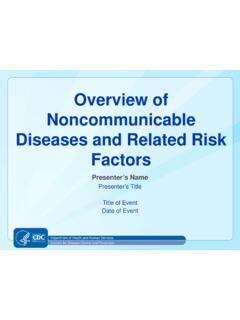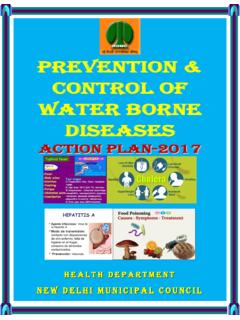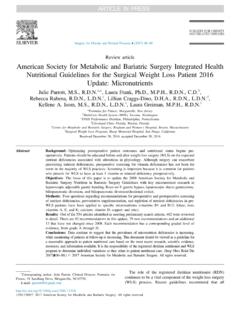Transcription of INDEX OF DISEASES/DISORDERS
1 Acid-base imbalancesrespiratory, 195metabolic, 483 AIDS, 709 Alcohol: acute withdrawal, 819 Alzheimer s disease , 764 Amputation, 646 Anemia iron deficiency, anemia of chronic disease , pernicious, aplastic, hemolytic, 493 Angina (coronary artery disease , acute coronarysyndrome), 64 Anorexia nervosa, 369 Aplastic anemia, 493 Appendectomy, 344 Asthma, 120 Bariatric surgery, 396 Benign prostatic hyperplasia, 588 Bulimia nervosa, 369 Burns: thermal, chemical, and electrical acuteand convalescent phases, 667 Cancer, 846 Cardiac surgery: postoperative care, 100 Cardiomyoplasty, 100 Cerebrovascular accident/stroke, 238 Chemical burns, 667 Cholecystectomy, 364 Cholecystitis with cholelithiasis, 357 Cholelithiasis, 357 Chronic obstructive pulmonary disease , 120 Cirrhosis of the liver, 445 Colostomy, 334 Coronary artery bypass graft, 100 Coronary artery disease , 64 Craniocerebral trauma acute rehabilitativephase, 220 Crohn s disease , 321 Deep vein thrombosis, 111 Dementia (Alzheimer s type or vascular)
2 , 764 Diabetes mellitus/diabetic ketoacidosis, 405 Diabetic ketoacidosis, 405 Disaster considerations, 876 Disc surgery, 262 Dysrthymias , 88 Eating disorders: anorexia nervosa/bulimia nervosa, 369 Eating disorders: obesity, 387 Electrical burns, 667 End-of-life care/hospice, 866 Enteral feeding, 469 Esophageal bleeding, 306 Extended care, 801 Fecal diversions: postoperative care of ileostomyand colostomy, 334 Fluid and electrolyte imbalances, 903 Fluid and electrolyte imbalances, 903 Fractures, 632 Gastrectomy/gastric resection, 317 Gastric bypass, 396 Gastric partitioning, 396 Gastroplasty, 396 Glaucoma, 204 Graves disease , 419 Heart failure.
3 Chronic, 48 Hemodialysis, 575 Hemolytic anemia, 493 Hemothorax, 154 Hepatitis, 434 Herniated nucleus pulposus (ruptured invertebraldisc), 254 HIV-positive client, 697 Hospice, 866 Hypercalcemia (calcium excess), 927 Hyperkalemia (potassium excess), 921 Hypermagnesemia (magnesium excess), 932 Hypernatremia (sodium excess), 915 Hypertension: severe, 37 Hyperthyroidism (Graves disease ,thyrotoxicosis), 419 Hypervolemia (extracellular fluid volumeexcess), 905 Hypocalcemia (calcium deficit), 924 Hypokalemia (potassium deficit), 918 Hypomagnesemia (magnesium deficit), 930 Hyponatremia (sodium deficit), 914 Hypovolemia (extracellular fluid volume deficit), 908 Hysterectomy, 611 Ileostomy, 334 Inflammatory bowel disease : ulcerative colitis,Crohn s disease , 321 Iron deficiency anemia, 493 Laminectomy, 262 Laryngectomy (postoperative care), 160 Leukemias, 516 Lung cancer.
4 Postoperative care, 144 Lymphomas, 525 Mastectomy, 619 metabolic acid-base imbalances, 483 metabolic acidosis primary base bicarbonatedeficiency, 483 metabolic alkalosis primary base bicarbonateexcess, 488 Minimally invasive direct coronary arterybypass, 100 Multiple sclerosis, 290 Myocardial infarction, 74 Obesity, 387 Obesity: bariatric surgery gastric partitioning/gastroplasty, gastric bypass, 396 Pancreatitis, 458 Parenteral feeding, 469 Pediatric considerations, 890 Peritoneal dialysis, 570 Peritonitis, 349 Pernicious anemia, 493 Pneumonia, 131 Pneumothorax, 154 Primary base bicarbonate deficiency, 483 Primary base bicarbonate excess, 488 Primary carbonic acid deficit, 200 Primary carbonic acid excess, 195 Prostatectomy, 596 Psychosocial aspects of care, 749 Pulmonary emboli considerations, 111 Pulmonary tuberculosis, 186 Radical neck surgery.
5 Laryngectomy (postoperative care), 160 Renal calculi, 603 Renal dialysis, 560 Renal failure: acute, 536 Renal failure: chronic, 548 Respiratory acid-base imbalances, 195 Respiratory acidosis (primary carbonic acidexcess), 195 Respiratory alkalosis (primary carbonic aciddeficit), 200 Rheumatoid arthritis, 729 Ruptured invertebral disc, 254 Seizure disorders, 210 Sepsis, 686 Septicemia, 686 Sickle cell crisis, 503 Spinal cord injury (acute rehabilitative phase),271 Stroke, 238 Substance dependence/abuse rehabilitation, 835 Surgical intervention, 782 Thermal burns, 667 Thrombophlebitis.
6 Deep vein thrombosis (includingpulmonary emboli considerations), 111 Thyroidectomy, 429 Thyrotoxicosis, 419 Total joint replacement, 655 Total nutritional support: parenteral/enteral feeding, 469 Transplantation considerations postoperativeand lifelong, 739 Tuberculosis, pulmonary, 186 Ulcerative colitis, 321 Upper gastrointestinal/esophageal bleeding, 306 Urinary diversions/urostomy (postoperativecare), 578 Urolithiasis (renal calculi), 603 Urostomy, 578 Valve replacement, 100 Vascular dementia, 764 Ventilatory assistance (mechanical), 173 INDEX OF 9/3/09 4:03 PM Page 1 Client Assessment DatabaseProvides an overview of the more commonly occurring etiology and coexisting factors associated with a specific medicaland/or surgical diagnosis as well as the signs and symptoms and corresponding diagnostic PrioritiesEstablishes a general ranking of needs and concerns on which the Nursing Diagnoses are ordered in constructing the plan ofcare.
7 This ranking would be altered according to the individual client GoalsIdentifies generalized statements that could be developed into short-term and intermediate goals to be achieved by the clientbefore being discharged from nursing care. They may also provide guidance for creating long-term goals for the client towork on after DiagnosisThe general need or problem (diagnosis) is stated without the distinct cause and signs and symptoms, which would be addedto create a client diagnostic statement when specific client information is available. For example, when a client displaysincreased tension, apprehension, quivering voice, and focus on self, the nursing diagnosis of Anxiety might be stated: severeAnxiety related to unconscious conflict, threat to self-concept as evidenced by statements of increased tension, apprehension.
8 Observations of quivering voice, focus on addition, diagnoses identified within these guides for planning care as actual or risk can be changed or deleted andnew diagnoses added, depending entirely on the specific client Be Related to/Possibly Evidenced byThese lists provide the usual or common reasons (etiology) why a particular need or problem may occur with probable signsand symptoms, which would be used to create the related to and evidenced by portions of the client diagnostic statementwhen the specific situation is a risk diagnosis has been identified, signs and symptoms have not yet developed and therefore are not included inthe nursing diagnosis statement.
9 However, interventions are provided to prevent progression to an actual problem. The excep-tion to this occurs in the nursing diagnosis risk for Violence, which has possible indicators that reflect the client s risk Outcomes/Evaluation Criteria Client WillThese give direction to client care as they identify what the client or nurse hopes to achieve. They are stated in general termsto permit the practitioner to modify or individualize them by adding time lines and specific client criteria so they become measurable. For example, Client will appear relaxed and report anxiety is reduced to a manageable level within 24 hours.
10 Nursing Outcomes Classification (NOC) labels are also included. The outcome label is selected from a standardizednursing language and serves as a general header for the outcome indicators that Interventions Classification (NIC) labels are drawn from a standardized nursing language and serve as a generalheader for the nursing actions that actions are divided into independent those actions that the nurse performs autonomously; and collaborative those actions that the nurse performs in conjunction with others, such as implementing physician orders. The interventions inthis book are generally ranked from most to least common.
